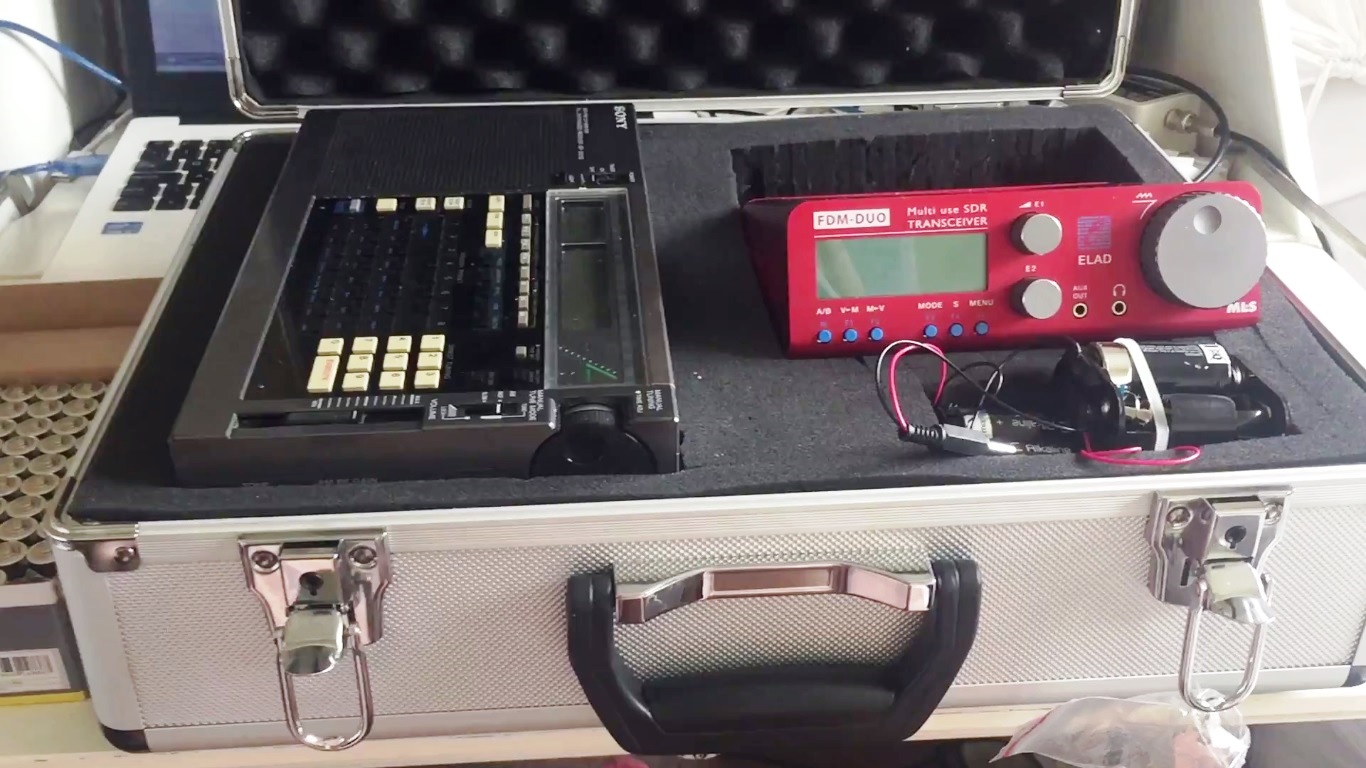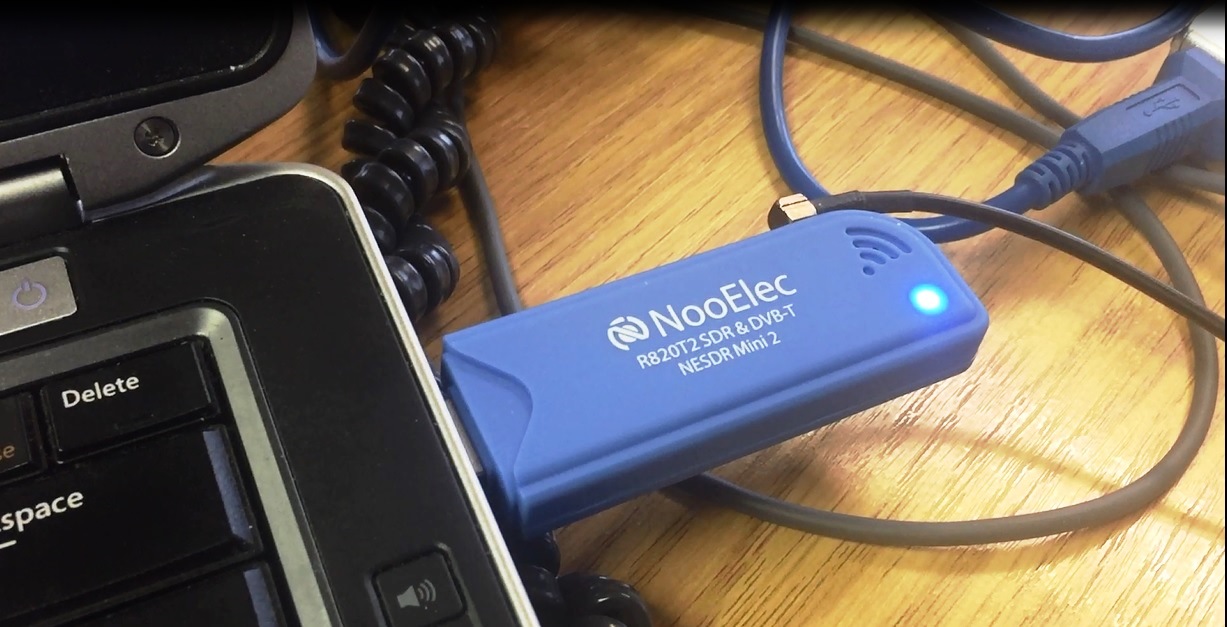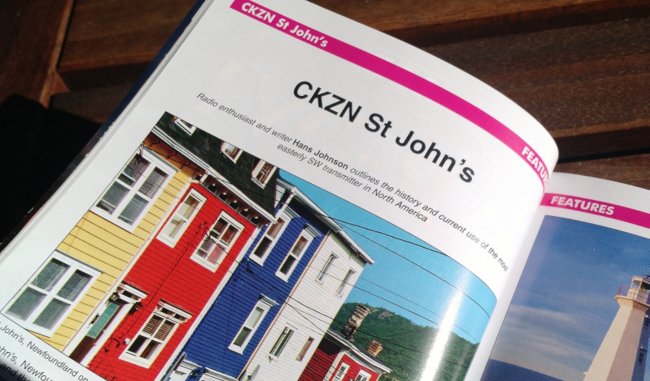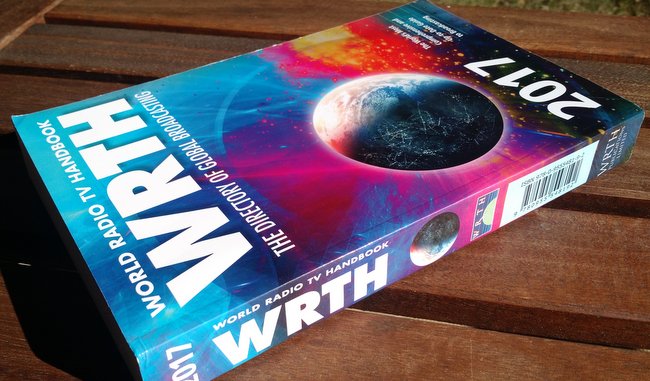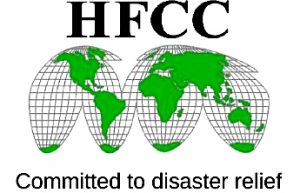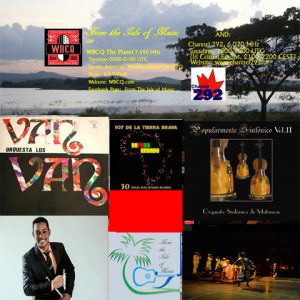Many thanks to SWLing Post contributor, David Iurescia (LW4DAF), for sharing Radio Romania International’s 2017 summer shortwave radio schedule:
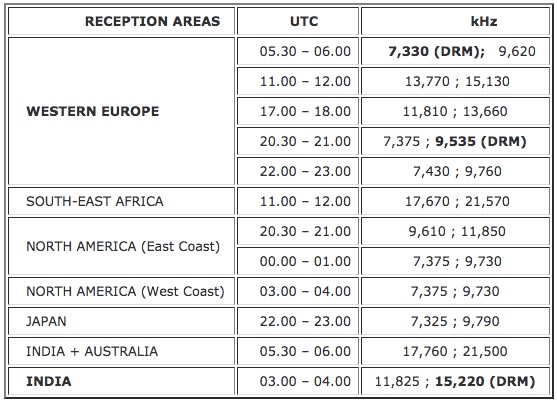
For full details about the various ways you can listen to RRI, check out their website.
Category Archives: Schedules
North American and European medium wave signals into Oxford, UK
Hi there, I’ve been rather preoccupied of late, initially with the brilliant Tecsun PL-310ET and latterly with the even more brilliant Eton Satellit. However, in the background (as always), I’ve been trying to catch transatlantic medium wave DX. My listening schedule is broadly based on shortwave DXing during daylight hours – when I’m not at work of course, typically a Friday afternoon or at weekends – and always with a portable. Evenings usually start off with a tune around the tropical bands, followed by setting up the Elad FDM DUO to run some medium wave spectrum recordings overnight. In the past few days though, my daylight DXing has been bolstered by my NooElec RTL-SDR and ‘Ham it up’ upconverter. I bought the device over a year ago and after some initial exceitement, it quickly became quite obvious that I needed a reciever with a bit more ‘oomph’! However, it’s actually proving very useful to view signals on a spectrum, even when I’m conducting most or all of my listening on a different (i.e. higher performing) receiver. Ultimately, the RTL-SDR is always going to be a compromise, with relatively limited sensitivity, but because by it’s very nature it has excellent selectivity, overall it’s a reasonable performer. My particular RTL-SDR performs quite well if a decent antenna is employed with it, such as a longwire or the Wellbrook ALA1530 active loop.
Anyway, back to the medium wave DX. In the past month or two, I’ve copied a number of stations from North America, with really nice signals, including WRCR Rampano – New York, WFED Federal News Radio – Washington DC, WENE – Endicott and WUNR – Brookline from Newton, Mass. I’ve also recorded a lovely interval signal from RAI Radio 1, Milano and further European signals from Magyar Radio, Budapest and Radio Slovenija 1, from Ljubljana. During the past 18 months or so of DXing, I have been mostly ignoring signals coming into Oxford from the continent. However, that changed a little after I stumbled across the RAI Radio 1 interval signal, which complete with the rather rousing Italian National Anthem, inspired me to dig out some more European DX. I’m actually finding European DX quite rewarding, particularly because it feels new again – not surprising since I haven’t listened to Europeans on medium wave for any length of time since the 1980s. I hope you enjoy the reception videos – embedded video and text links follow below and I wish you all the very best DX.
Click here to watch on YouTube
Click here to watch on YouTube
Click here to watch on YouTube
Click here to watch on YouTube
Click here to watch on YouTube
Click here to watch on YouTube
Click here to watch on youtube
Click here to watch on YouTube
Clint Gouveia is the author of this post and a regular contributor to the SWLing Post. Clint actively publishes videos of his shortwave radio excursions on his YouTube channel: Oxford Shortwave Log. Clint is based in Oxfordshire, England.
WRTH 2017: A look inside
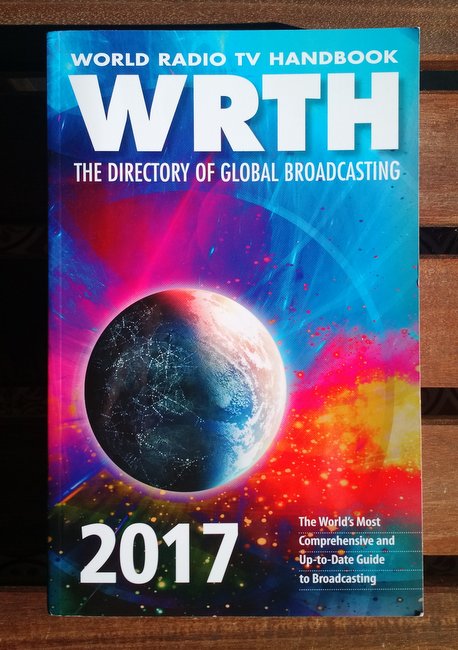 I received my copy of the 2017 World Radio and TV Handbook (WRTH) directly from the publisher last week, just prior to Christmas holiday ravels. As I mention every year, I look forward to receiving this excellent staple radio reference guide–and this is their 71st edition!
I received my copy of the 2017 World Radio and TV Handbook (WRTH) directly from the publisher last week, just prior to Christmas holiday ravels. As I mention every year, I look forward to receiving this excellent staple radio reference guide–and this is their 71st edition!
WRTH’s team of noted DXers from around the world curate frequencies and broadcaster information by region; while I’m not sure how they orchestrate all of this, the end result is truly a symphony of radio information. In addition to broadcaster listings, WRTH’s radio reviews, feature articles, and annual HF report make for excellent reading.
But the WRTH isn’t just a frequency guide: the publication always devotes the first sixty or so pages to articles relating to various aspects of the radio hobby. Following, I offer a quick overview of these.
The first article always features a WRTH contributor: this year, WRTH’s International Editor, Sean Gilbert, tells us what sparked his interested in the hobby and what lead to his career with WRTH which started in 2000.
The second set of articles is always my favorite: WRTH receiver reviews.
 This year, WRTH begins with a review of the Icom IC-7300 general coverage transceiver. They also review the Reuter Elektronik RDR55D, and re-visit the SDRplay RSP1. Following radio reviews, they evaluate the excellent Wellbrook ALA1530LNP magnetic loop antenna and the Bonito AAS300 3 way active RF splitter.
This year, WRTH begins with a review of the Icom IC-7300 general coverage transceiver. They also review the Reuter Elektronik RDR55D, and re-visit the SDRplay RSP1. Following radio reviews, they evaluate the excellent Wellbrook ALA1530LNP magnetic loop antenna and the Bonito AAS300 3 way active RF splitter.
The following article focuses on one of my favorite shortwave broadcasters, The Mighty KBC. WRTH contributor, Max van Arnhem traces the broadcaster’s history and gives us a little insight about the people behind this music powerhouse. If you’re a KBC fan, you’re in for a treat!
I was very happy to find that the following feature article explores the world of Remote Reception. No doubt, remote listening is becoming one the most accessible ways many of us discover and enjoy our hobby today–especially as it can be difficult for some of us to fight urban radio interference.
Following this, WRTH writer, Hans Johnson, features an article on CKZN St. John’s Newfoundland. In this short article, Johnson covers the history and mission of this shortwave relay, dating back to the days when Newfoundland was a British dominion. Looking forward, Johnson notes that the CBC intend to not only continue this service directed at Labrador’s most remote areas, but it intends to replace their 1 kW Elcom Bauer transmitter in the coming years. This pleases me to no end as I’ve always loved snagging this particular relay of CFGB from my home here in North Carolina.
Next, DXer Rob Shepard writes about his travels in South America and the Pacific. Being an avid traveller myself, I love reading about others’ adventures across the globe with radio. Shepard even notes some catches from the Queen Mary II. I’ve never had the chance to do DXing while maritime mobile, but I hope to someday.
The following article features Danish radio enthusiast, Vagn Fentz, who has collaborated with WRTH since one of its very first editions. His radio history starts back when he was a schoolboy in Denmark during WWII, listening to the radio in secret. His story gives us insight into both his own world and that of the WRTH over the years.
Next, Michael Pütz outlines the progress, so far, of setting up an HF disaster relief radio network: the IRDR Project. If you haven’t heard of the IRDR project, this article makes for a great primer and also speaks to the potential future of a radio network that could have major positive impact over vast regions in the wake of disaster.
The final article–a tradition–is the WRTH HF propagation report/forecast by Ulf-Peter Hoppe. Always an informative read (despite the fact we’re heading into a solar minimum).
The 71st is another fantastic edition of the World Radio TV Handbook. I’ve never been disappointed with WRTH, in truth. Their publishing standards are such that the quality of their reviews, their writing, and (most importantly) their broadcast listings are simply unparalleled.
For DXers who collect QSL cards, you’ll find that broadcaster contact information in WRTH is often more up-to-date than a broadcaster’s own website. When readers contact me asking for QSL information from an obscure broadcaster, the first place I search is the current WRTH. Remember: their information is based on volunteer contributors who specialize in specific regions of the world–the most knowledgeable regional DXers keep this publication accurate.
Purchase your copy of WRTH 2017 directly from WRTH’s publishers, or from a distributor like Universal Radio (US) and Amazon.com (US), Radio HF (Canada), or BookDepository.com (International).
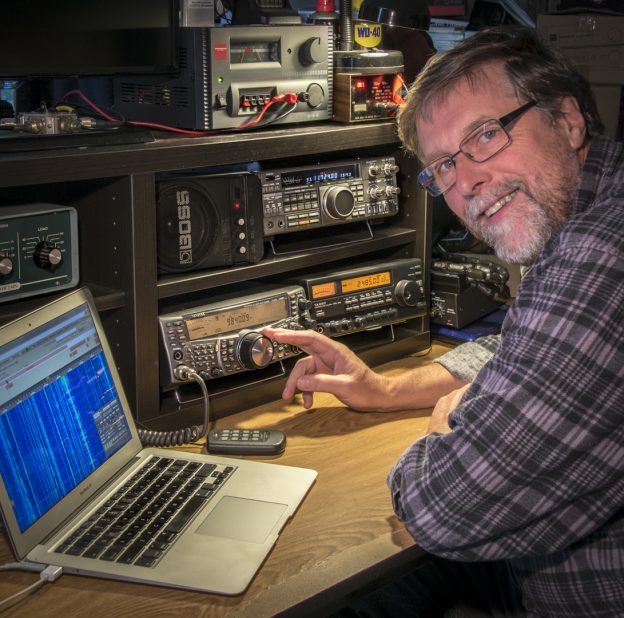
How to Identify Changes in Station Schedules
The shortwave bands are in a constant state of flux. And radio reception varies with the seasons. As a result, radio stations often need to alter their frequencies and times for best all-year-round reception at the listener’s location. There are two seasonal changeovers: the “A” transmission period coincides with the northern hemisphere summer (March to October), and the “B” transmission schedule for the winter period (October to March). Leading up to these changeovers, broadcasters plan their schedules for the coming season. The B16 transmission season began last weekend.
Want to improve your understanding of shortwave propagation characteristics? Study a few of the strategies employed by broadcast engineers at international radio stations during the twice yearly schedule changeovers. You’ll quickly learn much about how it all works!
Frequency changes by international broadcasters allow you the opportunity to observe the factors that come into play at BOTH the transmitter site and the reception target zone in another part of the world. Broadly speaking, we know that when winter arrives reception of the higher frequencies declines and the lower frequencies provide better reception. The reverse applies in summer – reception on the higher frequencies are enhanced and ionospheric absorption of signals increases at lower frequencies.
In addition, these characteristics change for both daytime and nighttime reception in summer and winter. Furthermore, some interesting reception opportunities occur in certain regions of the world during the summer and winter equinoxes. On top of this, factor in the 11-year sunspot cycle and the current monthly smoothed sunspot number (SSN). So, station engineers have quite a few variables to consider while selecting their preferred shortwave bands when targeting their signals to the listener’s location in some other part of the world! Perhaps one could even consider that these calculations as both a science and an art!
Next, the engineers representing each station have to sit down with their colleagues (competitors?) from other broadcasters and negotiate suitable frequency allocations in each of the preferred bands. This is why we have the existence of the High Frequency Coordination Committee (HFCC). Working together to find and register suitable frequencies that don’t interfere with other transmissions is an important part of successfully ensuring that everyone “wins”. The HFCC describes its role this way:
The main objective of the HFCC is to provide the representation and services for the promotion of an efficient and economical use of the short-wave radio spectrum, and the improvement of radio reception of shortwave broadcast transmissions worldwide……
HFCC’s main activity is a direct coordination of frequencies among frequency managers and specialists of broadcasters, administrations, transmission service providers and other organisations with the aim to facilitate the resolution or minimisation of mutual interference on short waves…..
Membership of the HFCC is open to all individuals and organisations that provide frequency management and planning for recognised shortwave broadcasters.
And it has to be said that the HFCC does a very good job at trying to resolve potential conflicts and clashes in frequency registration. But we didn’t always have this informal governing body. HFCC was only formed in 1990. Prior to that, there was much “rough and tumble” as stations tried to sort it out for themselves and avoid getting in each others way. Remember also, in the 1970s and 80’s there were many more shortwave broadcasters than there are today, each with very large operating schedules. For younger readers here, imagine the international bands being six or seven times busier than they are today!
Understanding propagation characteristics, frequency allocation, antenna beam headings, different time zones and many other aspects of international broadcasting have been a source of fascination for me, both as a shortwave listener and as an amateur (ham) radio operator.
Here are some things to consider when monitoring the change in transmission seasons:
- Learn the basics of shortwave propagation and the characteristics on display over a 24-hour period, seasonally, annually, and within the sunspot cycle. It’s a big topic and takes a while to really absorb it all!
- Familiarise yourself with which part of the spectrum the broadcaster can be expected to successfully utilise during a certain season.
- When finding a station on a new frequency (NF), try to locate and note down the formerly used frequency. Sometimes, that same station will return to the deleted frequency at the start of the next season (the next half of the year).
- Noting the deleted frequency often reveals that another station has taken up position on that channel.
- Check to see if the same transmitter site is used for the NF. With so many stations using a variety of relay sites these days, you cannot just assume that the same relay is being used for the NF as it was for the old frequency.
- Some station schedules are complicated and can be hard to decipher. Time changes, language changes, an increase or decrease in the number of frequencies the station employs for a particular service, daily broadcasts, weekends only, weekdays only, or only certains days of the week can make it tricky to reveal how the NF relates to the old frequency. Expect that you might sometimes get it wrong!
- A few stations (e.g. China Radio International or Radio Free Asia) use so many outlets for some broadcasts that it can be too hard to tell what was the replaced frequency. In those cases, I just throw up my hands and move on!
- Maybe the target location of the broadcast has changed. Checking the transmitter’s azimuth beam headings can help here.
Like other “old dudes”, I have spent many years observing and documenting the schedule changes of shortwave broadcasters. This is a part of the hobby that I personally find quite absorbing. However, I’m aware that it’s probably NOT something that some others might enjoy quite so much!
Since the B16 changes came in one week ago, I have been busy monitoring the bands to find the NFs and the deleted frequencies (the ex’s) and any other variations to the broadcasting schedules of each station.
There are HUNDREDS of changes to discover. But I can’t find them all – I also have to eat, sleep, and get on with life!
However, here is a list of the 93 observations I have made over just the past few days:
NOTE: Frequencies in kHz, Times in UTC
ABBREVIATIONS: NF = New Frequency, ex = deleted frequency, QRM = interference, // = another or parallel frequency used at the same time, As = Asia, SEAs = South East Asia, etc. Af = Africa, WAf = West Africa, etc. Eu = Europe, EEu = Eastern Europe, etc. NAm = Nth America, ENAm = Eastern Nth America, etc. Oc = Oceania
FORMAT: Freq – Country of Transmitter site – Station Name – Transmitter Location – comments.
5885 NTH MARIANA IS. RFA – Tinian. Korean to EAs at 1710, NF and good signal, Nov 4.
5910 OMAN. BBC – Al Seela. S/on 1700 in Dari to SEAs, NF, good signal, Nov 4.
5955 ROMANIA. RRI – Tiganesti. Italian to SEu, 1715, NF (ex 5910) and fair signal, Nov 4.
5965 NTH MARIANA IS. RFA – Tinian. Mandarin at 2030, NF and heavy jamming, Oct 31.
5970 TURKEY. VoT – Emirler. French to Eu, 2035, NF (ex 9635), fair signal Oct 31.
5980 TURKEY. VoT – Emirler. Turkish to Eu 2005, NF (ex 9460), good signal, Oct 31.
5990 ROMANIA. RRI – Galbeni. Romanian to Eu, 2040 to s/off 2100, NF (Believed to be ex 9500), good signal, Oct 31.
6010 CHINA. CRI – Urumqi. S/on 1800 in Amoy (Min Nan Chinese), NF (ex 13700) fair signal but QRM from Korean jamming on 6015, Nov 4.
6025 IRAN. VOIRI – Sirjan. German to Eu at s/on 1720, NF (ex 9660), good signal, Nov. 4
6040 CHINA. CRI – Urumqi. Russian to EEu at 1745 to s/off 1757, NF (possibly ex 11875 for this txer site) and excellent signal Nov 4.
6050 TURKEY. VoT – Emirler. English to Eu at 2015 to s/off 2025, NF (ex 9785), fair signal, Oct 31.
6060 IRAN. VOIRI – Zhaedan. Arabic to NAf at 1802, NF (ex 7285), fair signal, Nov 4.
6070 CHINA. CRI – Beijing. Russian to EEu at 1815, NF (ex 9560), very good signal Nov 4.
6090 OMAN. BBC – Al Seela. English WS to CAs and ME, 1820, NF (ex 7375), good signal and // 6195 also heard via Al Seela, Nov 4.
6100 CHINA. CRI – Beijing. English to Eu at 1800-1900, NF (ex 9600), excellent signal and // 7405 (via Beijing) which is also a NF and well heard on Nov 4.
Click here to continue reading the remaining 78 new frequency observations
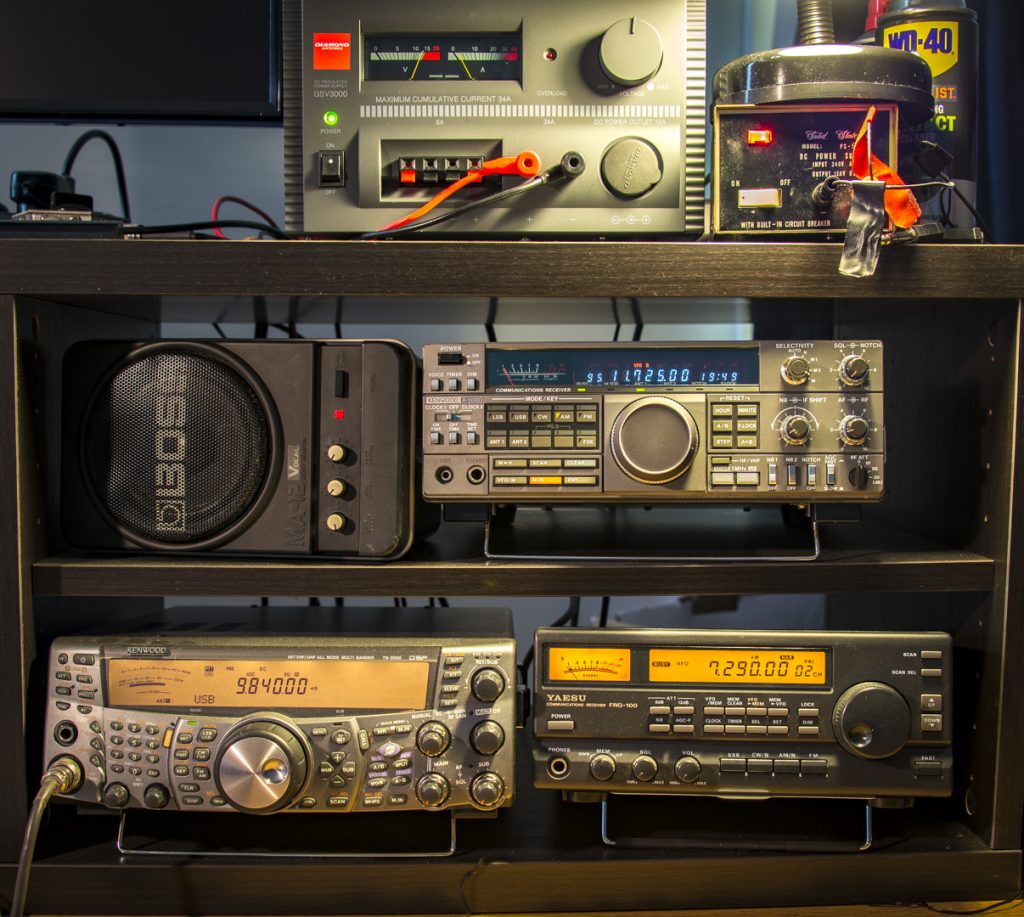
Part of Rob’s shack. Top Row: Two power supplies. Middle Row: Bose powered speaker, Kenwood R5000 receiver. Bottom Row: Kenwood TS2000 transceiver, Yaesu FRG100 receiver.
Rob Wagner, VK3BVW, is the author of this post and a regular contributor to the SWLing Post. He also blogs at the Mount Evelyn DX Report.
From the Isle of Music for June 21
The next edition of From the Isle of Music:
The June 21 (June 20 in the Americas on WBCQ) program features special guest Ethiel Failde, whose album Llego la Failde was nominated in the Opera Prima and Traditional Popular Music categories in Cubadisco 2016; we will also play some of the winner of the Traditional Afrocuban category, Soy de la Tierra Brava by Yoruba Andabo. We’ll finish Popularmente Sinfónico Vol II by Orquesta Sinfónica de Matanzas, and we will play some Los Van Van from the 1970s.
Two listening options on shortwave:
WBCQ, 7490 KHz, Tuesdays 0000 UTC (8pm EDT Mondays)
Channel 292, 6070 KHz, Tuesdays 1900 UTC (2100 CEST)
Update: From the Isle of Music
Many thanks to SWLing Post reader, Bill Tilford, who shares this From The Isle of Music update:
Since the addition of Channel 292 we are now getting excellent reception reports from as far east as Moscow.
Our April 11 (in the Americas) / April 12 (for the rest of the world) program will have more dance music than usual, with special guests Jesus Chappottin and Miguelito Cuni Jr. of Conjunto Chappotin, some classic dance tracks from Conjunto Los Bocucos and some Timba from El Niño y la Verdad. On the Jazz front, a new release by Brenda Navarrete, and more beautiful Cuban concert music from the album Danzas Para Piano de Ignacio Cervantes.
Two listening options on shortwave:
- WBCQ, 7490 KHz, Tuesdays 0000 UTC (8pm EDT Mondays)
- Channel 292, 6070 KHz, Tuesdays 1900 UTC (2100 CEST)
See the NOTES section of our Facebook page for program updates and other information.
Upcoming shows on the Isle of Music
Many thanks to Bill Tilford,who updates us on some of his upcoming Isle of Music broadcasts: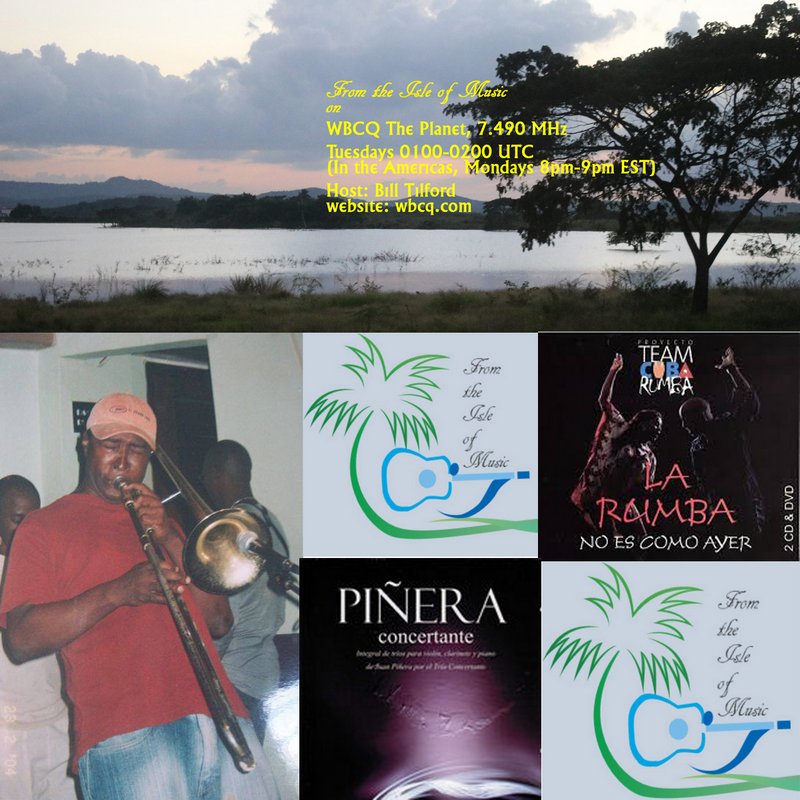
Greetings. Update for From the Isle of Music on WBCQ, 7490 KHz, 0100-0200 Tuesdays (Monday nights 8-9pm [EST] in the Americas)
The next few weeks of From the Isle of Music will feature, in addition to an eclectic selection of music from Cuba:
Feb 29: Special Guest is Juan Carlos Marín, on of Cuba’s best Jazz saxophonists
March 7: Special Guest is Ethiel Failde, director of Orquesta Miguel Failde, which preserves the Danzon, one of Cuba’s most important popular musical genres (it helped give birth to the Mambo and influenced North American Jazz)
March 14: Special Guest is Leo Garcia, leader of the group Timbalive, which plays Timba, one of Cuba’s best genres of modern dance music. Timbalive is based in Miami but regularly works with musicians on the island in its recordings.
A graphic for our Feb 29 show is attached…..
Thanks for all you do for radio……
And many thanks to you, Bill, for broadcasting the excellent tunes!


